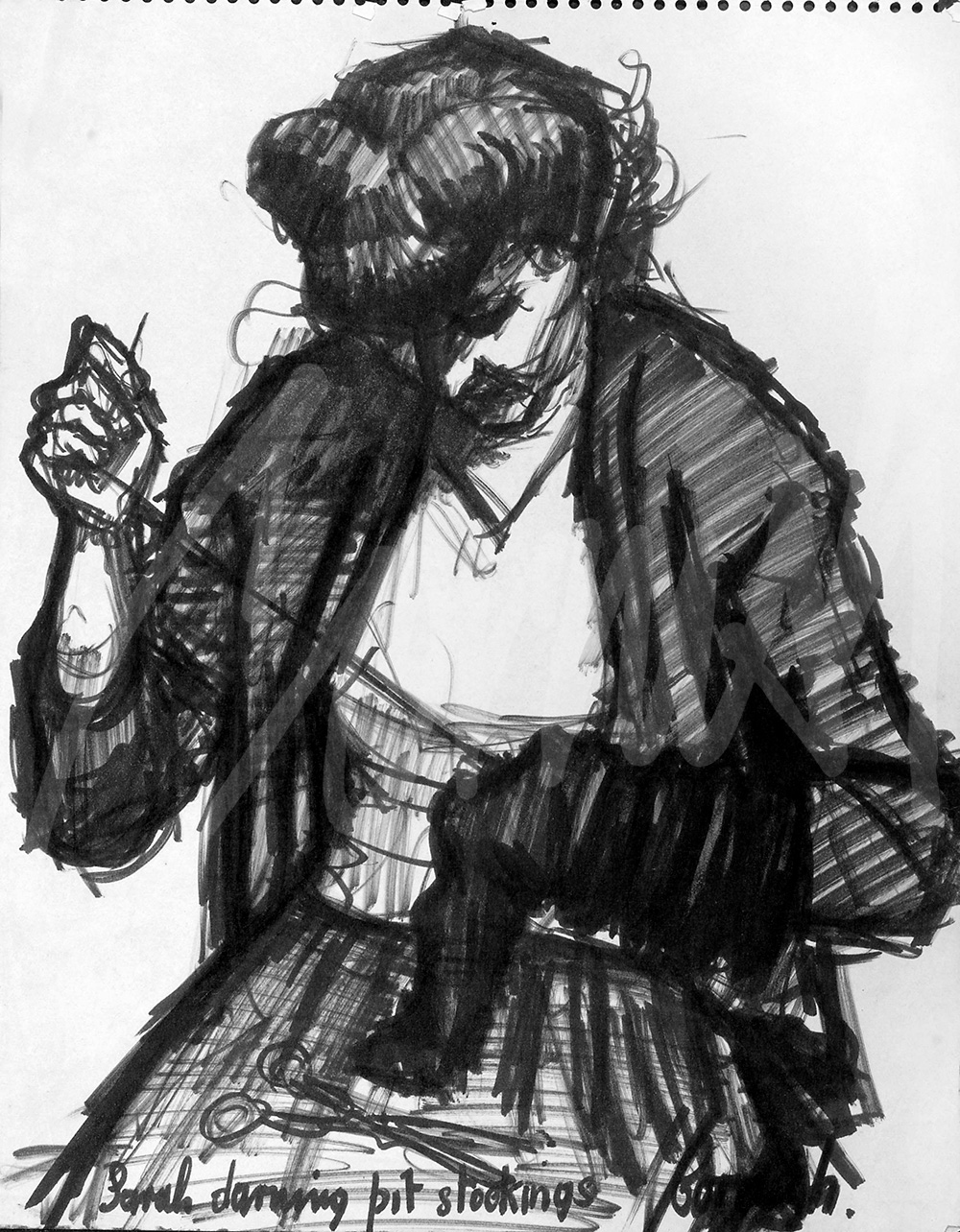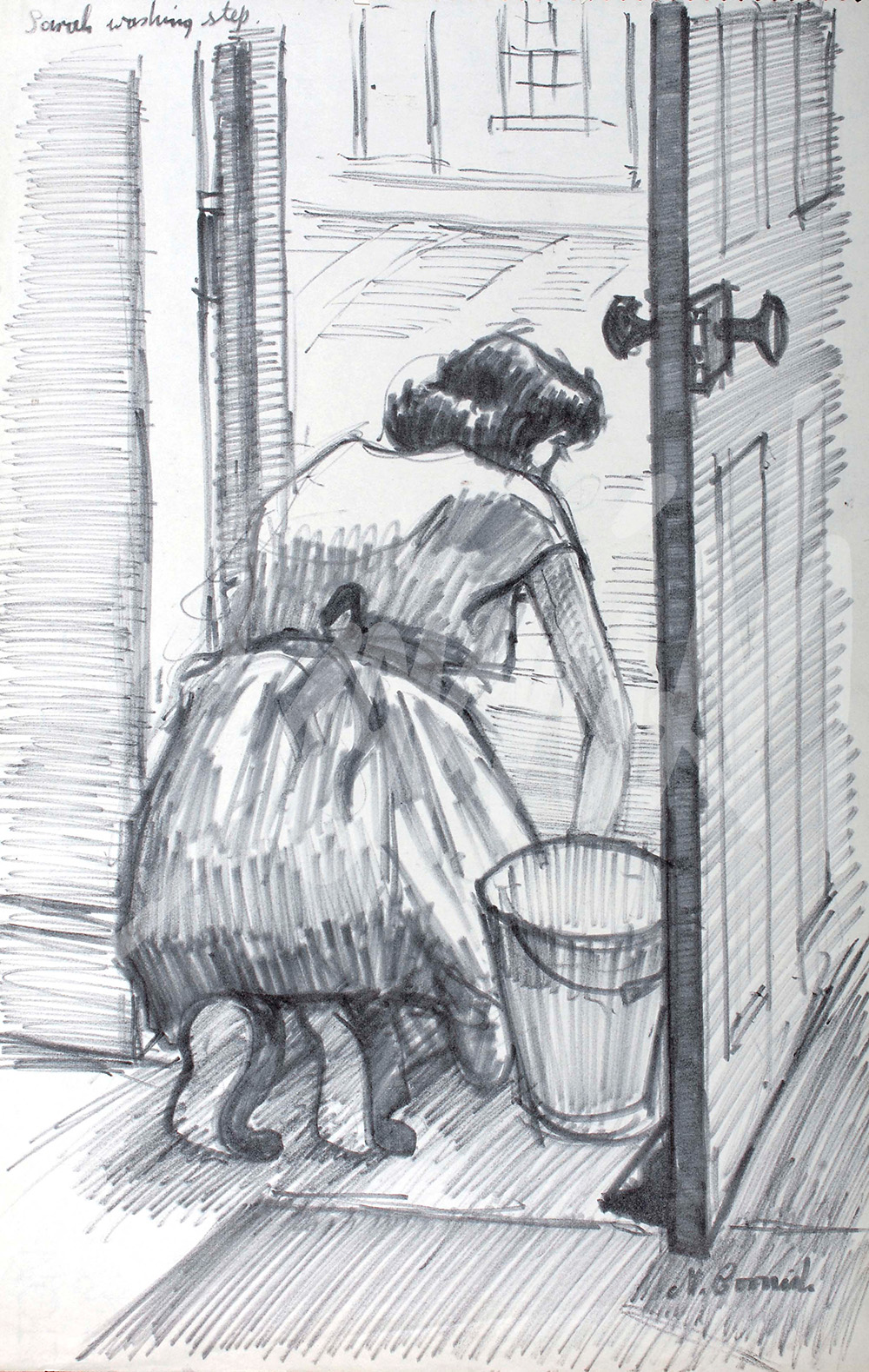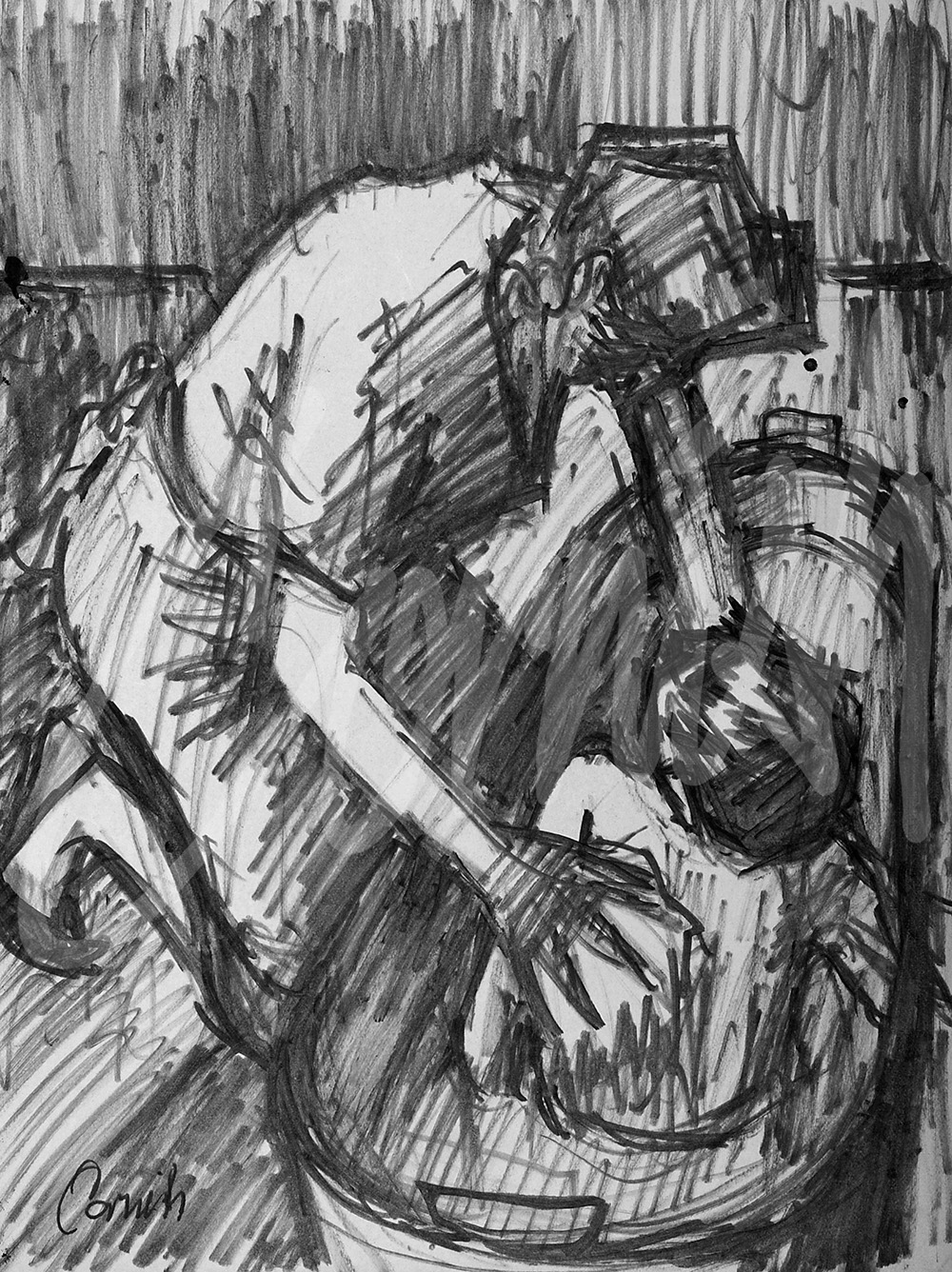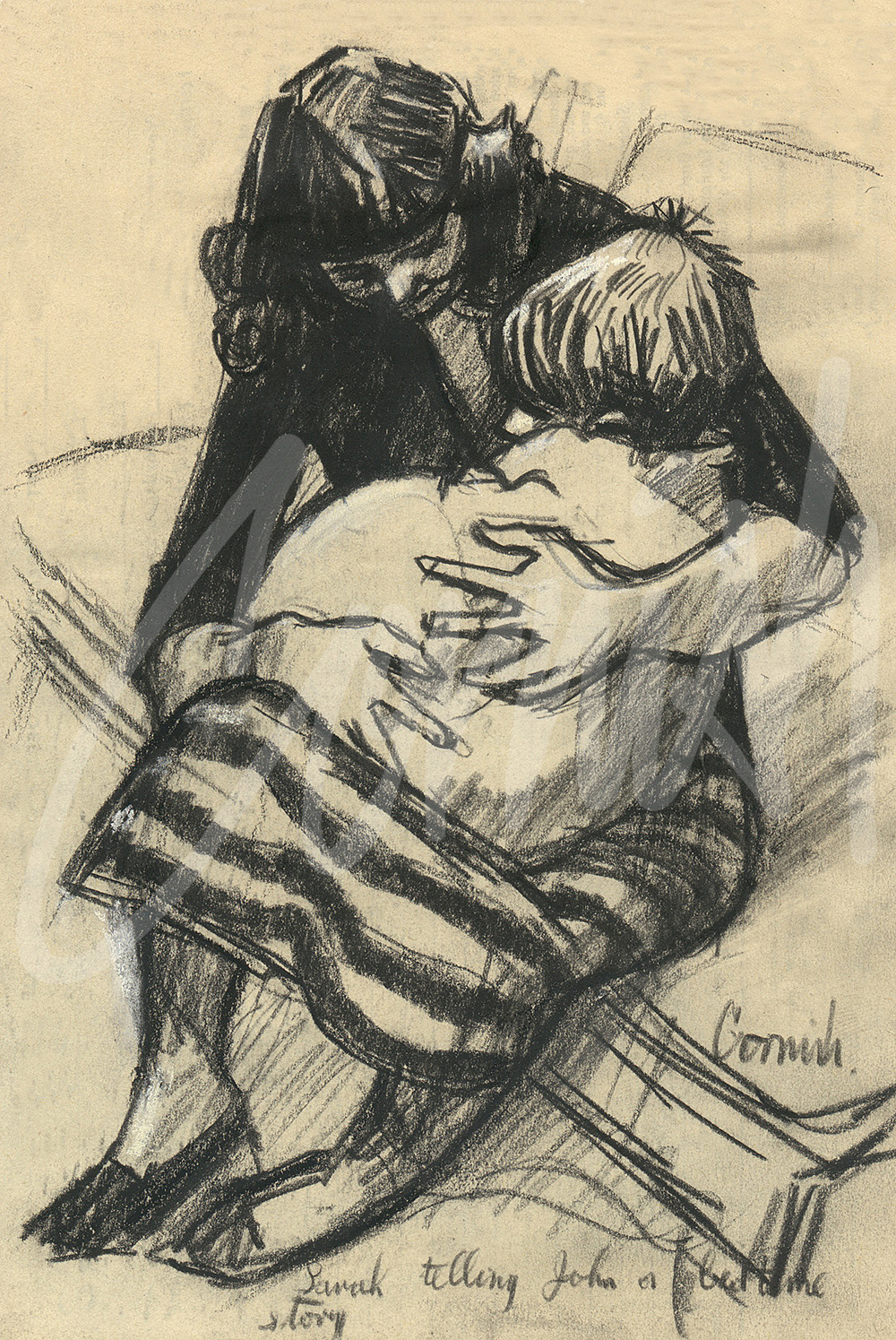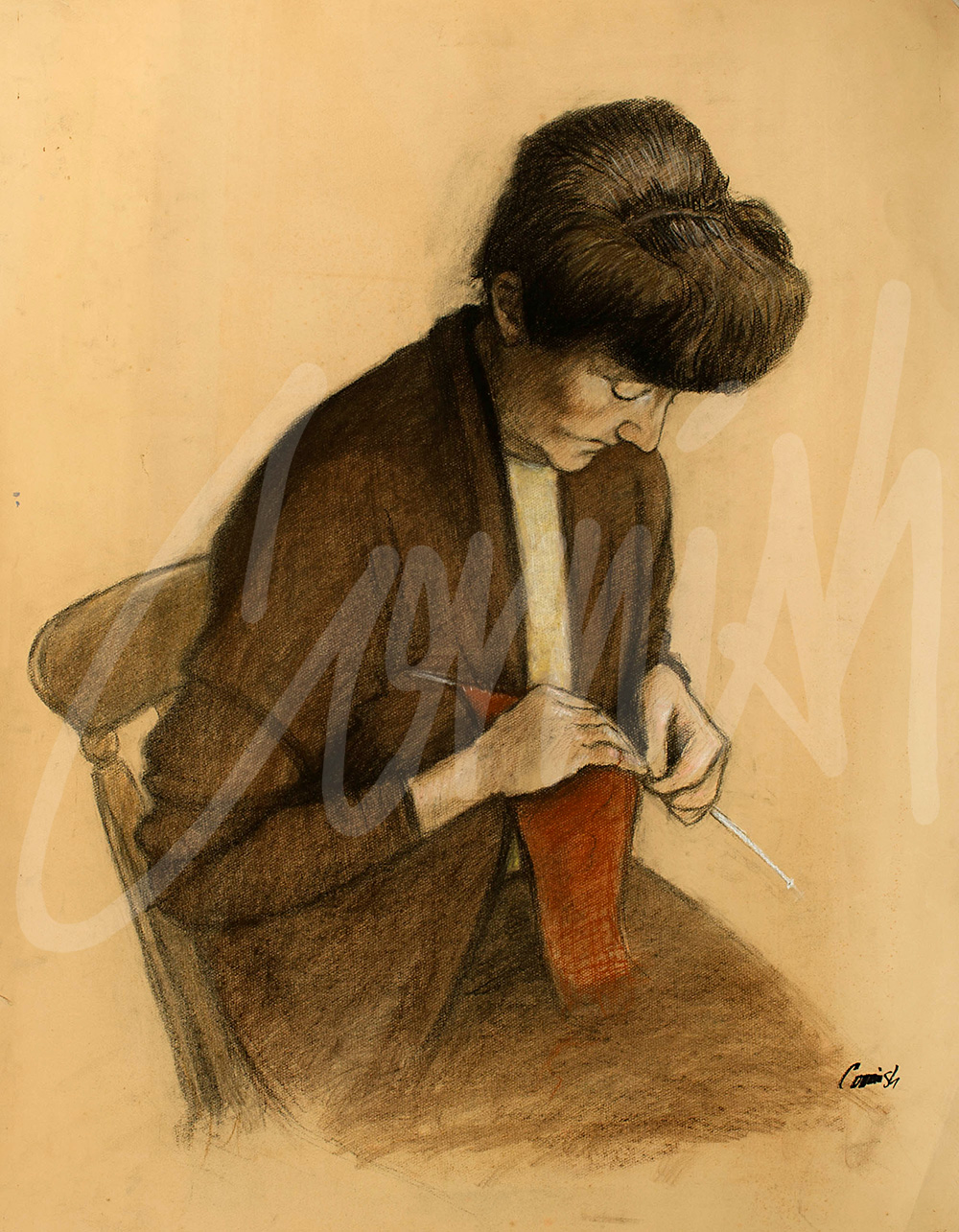Latest News
Grandma and the Proggy Mat
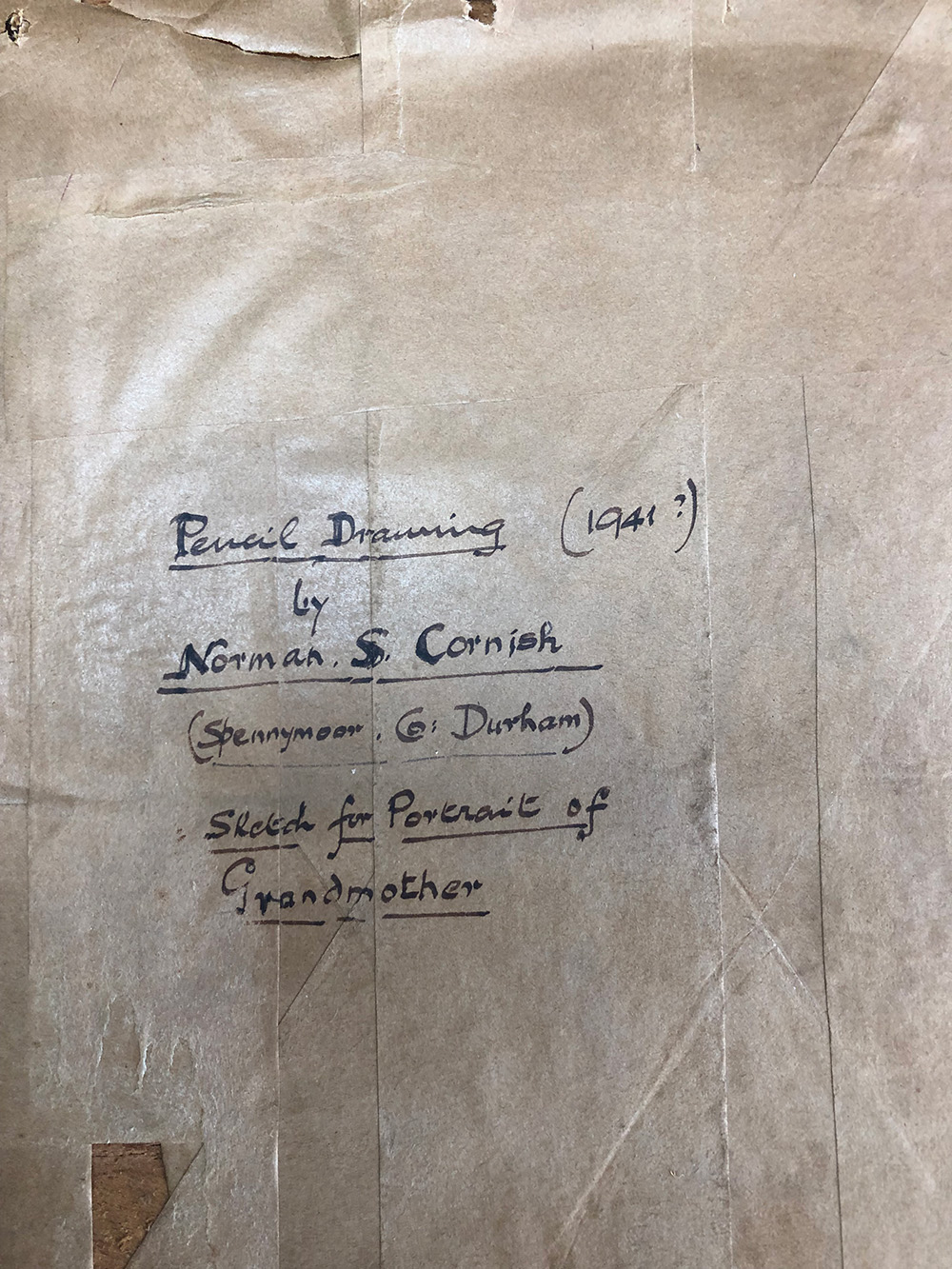
Cornish’s first oil painting was ‘My Sister Ella’ which was exhibited at the ‘Works of the Artists of the Northern Counties’ annual exhibition (1940) at the Laing Art Gallery in Newcastle. During preparations for the ‘Man of Destiny’ exhibition at the Greenfield Gallery during the Centenary year in 2019, an interesting discovery of a previously unseen drawing was revealed during removal from an old frame. Closer examination disclosed a signed and dated pencil drawing ‘Sketch for Portrait of Grandmother.’ Chronologically (1941) the drawings suggest that they may have been preparatory sketches for his second oil painting as the pose is developed to show his grandmother making a ‘proggy mat’ ?
Making ‘proggy mats’ was certainly part of the cultural landscape in all sorts of different communities and not only in the North East. From an early age Cornish was aware of this tradition and in the following extract from his autobiography he recalls some vivid memories.
’Some of my early years from about three to four were spent with my maternal grandmother. I remember playing with marbles in front of the fire on a home made clippy mat. On the mat was a complicated pattern, and in my mind, the pattern was imagined as rivers, roads and mountains as I deployed my marbles. At that time people would make mats by stretching a piece of hessian on a special wooden stretcher. They would then prod into it strips of cloth, wool etc cut from old clothes. There was often a mat in the making, stretched across the room and I used to be quietly annoyed when ducking under this contraption in order to get near the fire, especially if the washing was also stretched across the room. I used to think it resembled a Persian market.’
The tradition of making rag mats isn’t unique to the North east but the terms hooky, proggy and clippy are. Proggy mat making was originally born out of necessity but today is very much about the pleasure of making and the growing interest in re-cycling.
Cornish’s autobiography ‘A Slice of Life,’ with a Foreword by Melvyn Bragg was published in 1989 and subsequent editions published by Northumbria University were without the original images. A facsimile edition has been in preparation during this year and will be published in the coming months. Details will be announced via www.normancornish.com and one of the weekly posts.
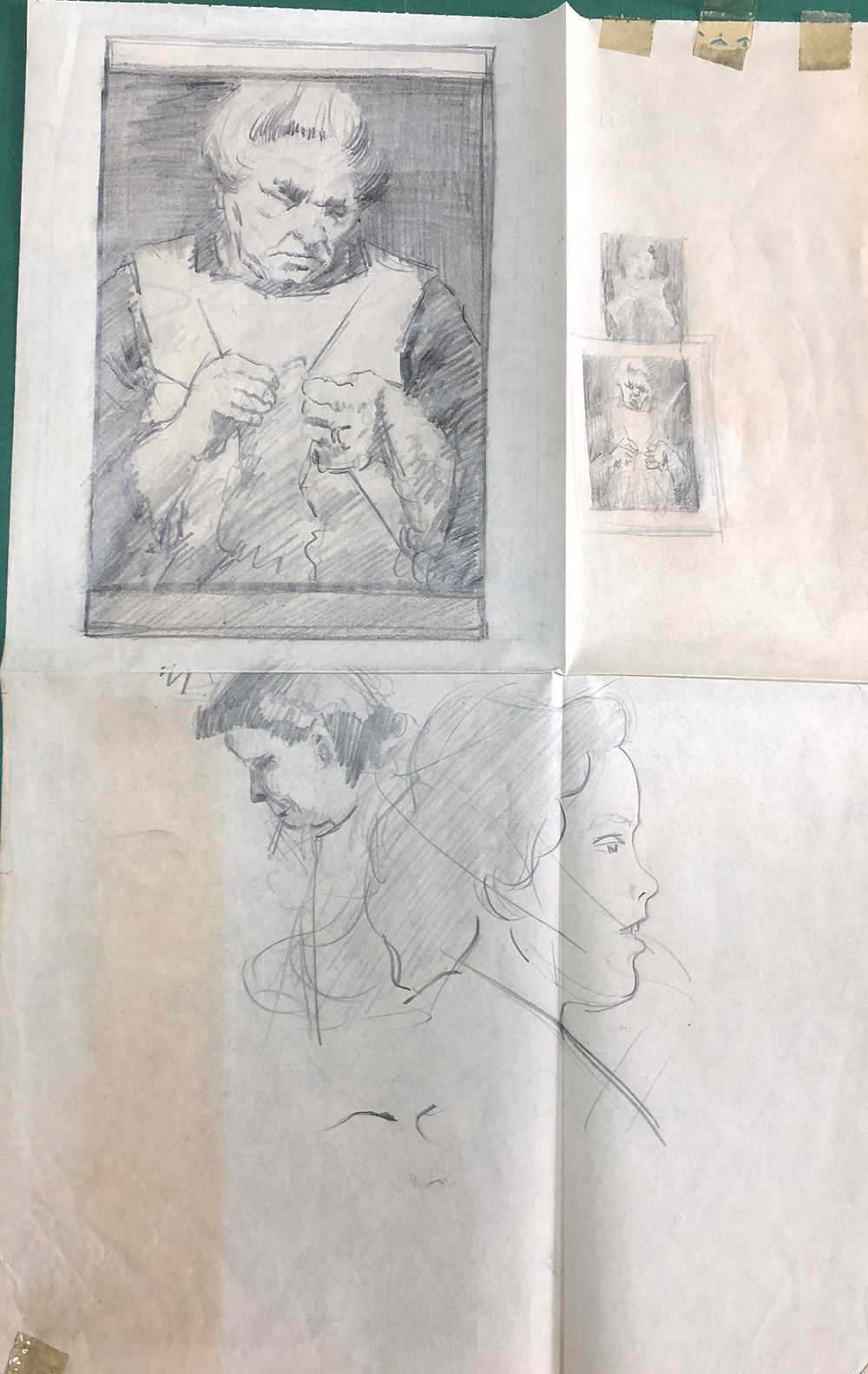
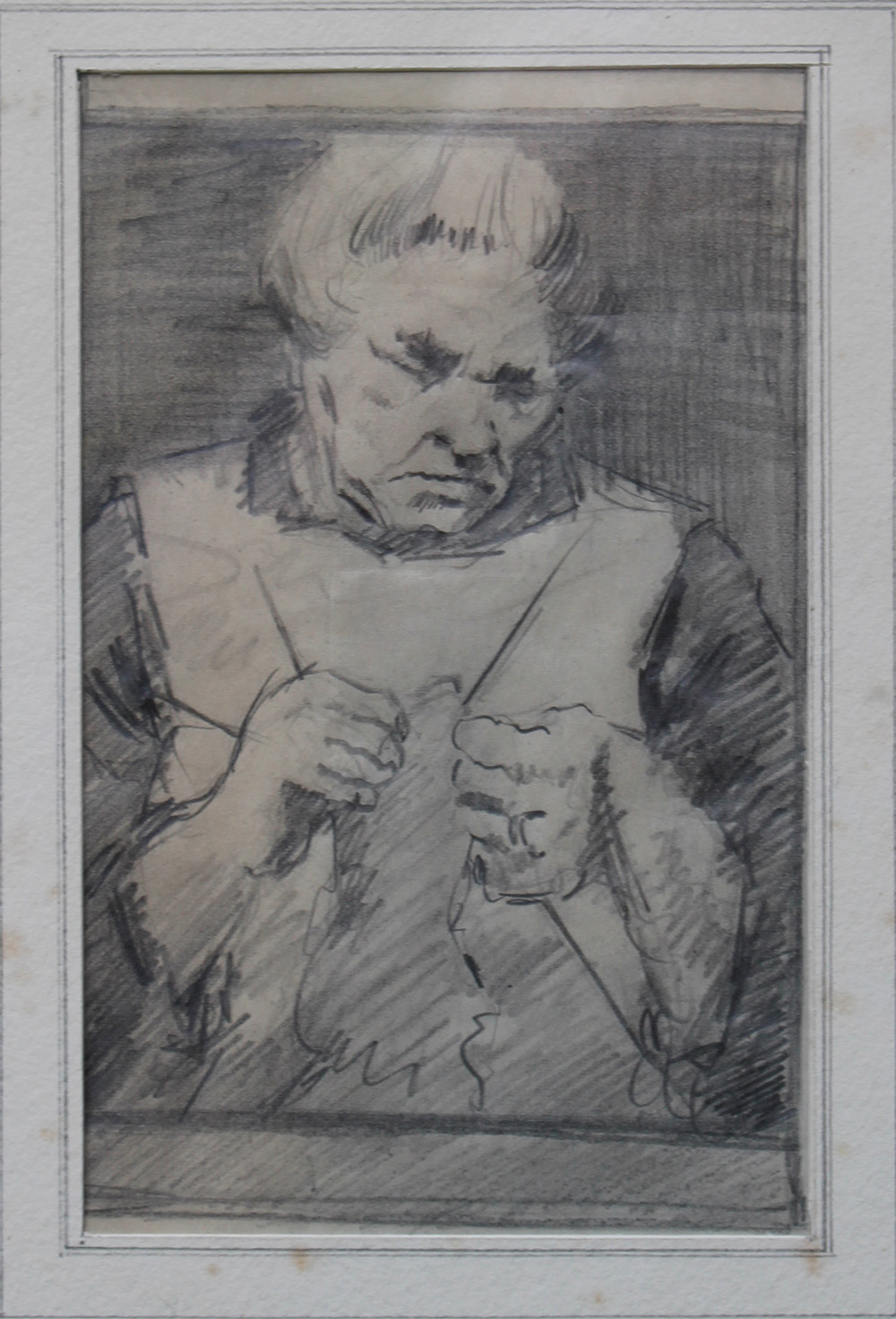
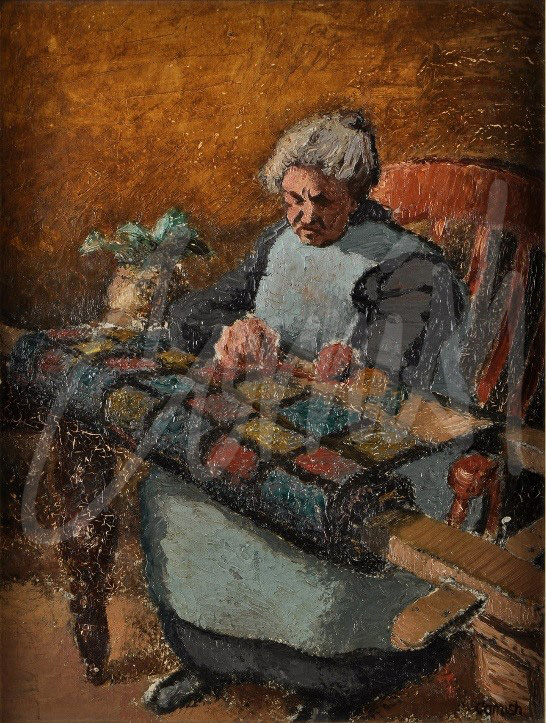
A Durham Townscape circa 1950
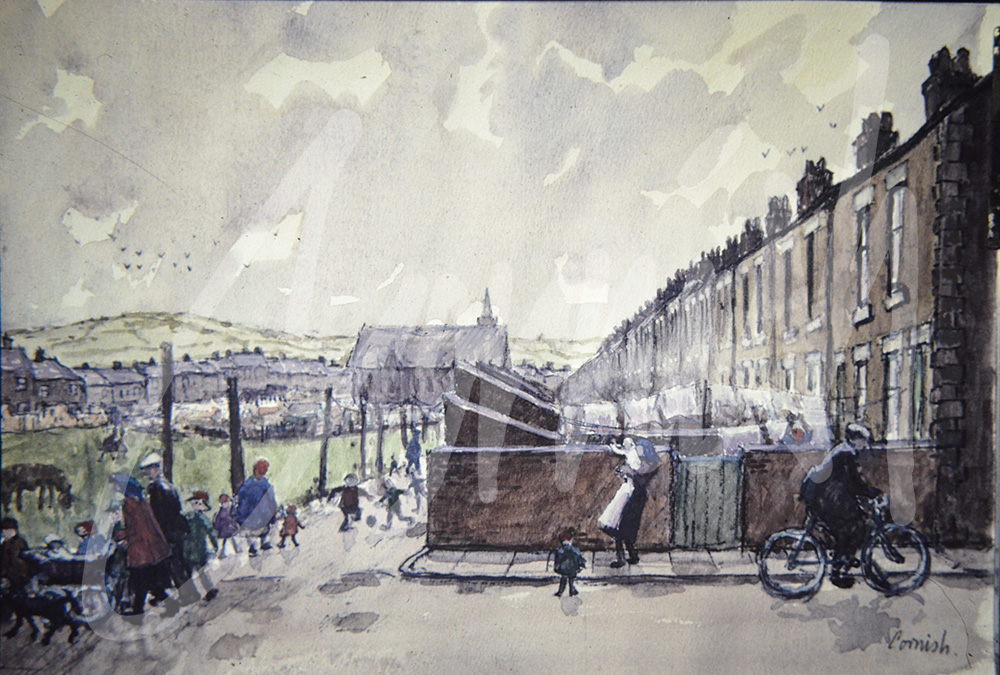
The classic: ‘ Mount Pleasant- Kids in Snow’ is one of Cornish’s most iconic images with the Holy Innocents church anchoring the carefully conceived composition. Typically Cornish re-visited Low Spennymoor, as it is known, on many occasions and clearly couldn’t resist taking different view - points and emphasising the landmark church placed at the end of Weardale Street.
One different perspective allows an unusual view of Upper Church Street on the left hand side of the picture. The high point on the ridge to the left and centre of the picture has been adjusted to help balance the composition (compare the sketch) and the very early version is without the Dean and Chapter Colliery which was introduced into the composition in a later version of the same scene.
Throughout his career Cornish painted many different street scenes in and around the Spennymoor area. He often re-visited the same location on different occasions and at different times of the year carefully recording people at work and play. These paintings may be interpreted as genre scenes ( images of daily life) which allow great insight into the daily cultural landscape, with pictorial representation in a variety of media.
Cornish’s influences include Pieter Breugel the Elder (1525-1569) and Rembrandt (1606-1669) and this is evidenced in the scenes which capture children at play in the snow and others going about their daily lives often at other times of the year. These oils on canvas are very carefully constructed compositions which bring together so many elements, not least the dozens of individual children and adults, carefully placed to appear to interact naturally. These are excellent example of inspiration for Cornish from simple everyday activity.
Cornish possessed a deep understanding of human behaviour and social interaction. He recorded local people going about their daily tasks, living real lives. Sometimes the drawings would become paintings and on other occasions they would be included in the many street scenes synonymous with his work. Throughout his career he was conscious of his contribution to a sociological and historical record of people and places in his ‘slice of life,’ although children playing with ‘boola hoops’ was a historical record from an era which pre-dates his ‘Durham Townscape circa 1950.’
These examples and many other street scenes and related quotations, can be enjoyed in ‘Behind The Scenes: The Norman Cornish Sketchbooks.’ The book contains four academic essays and four other chapters examining in depth: Bar Scenes, Observations of People, Street Scenes and Mining Scenes. Lavishly illustrated, copies may be purchased by visiting www.normancornish.com.
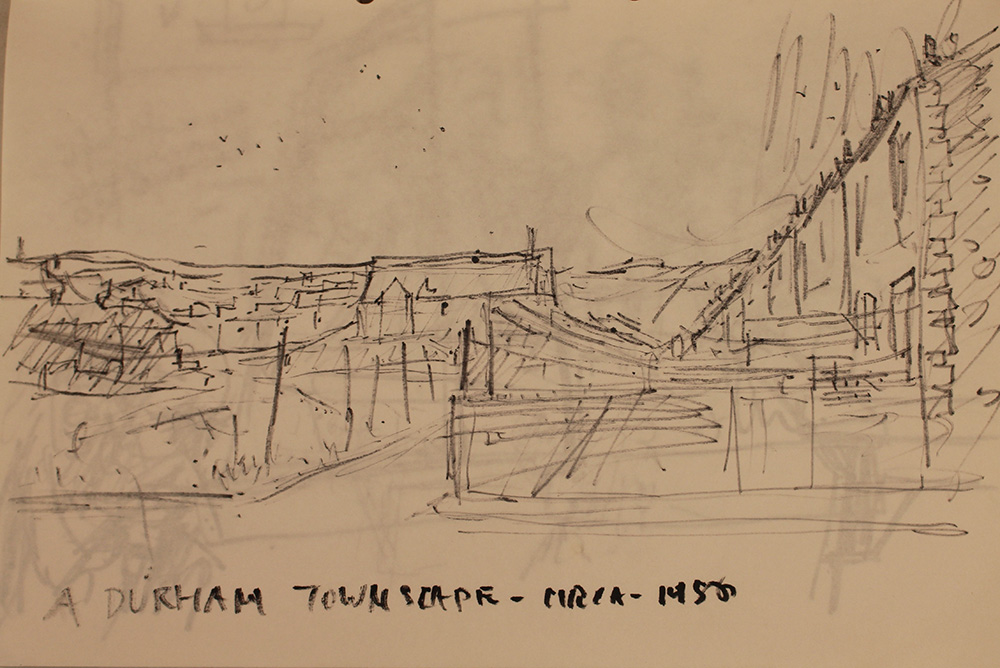
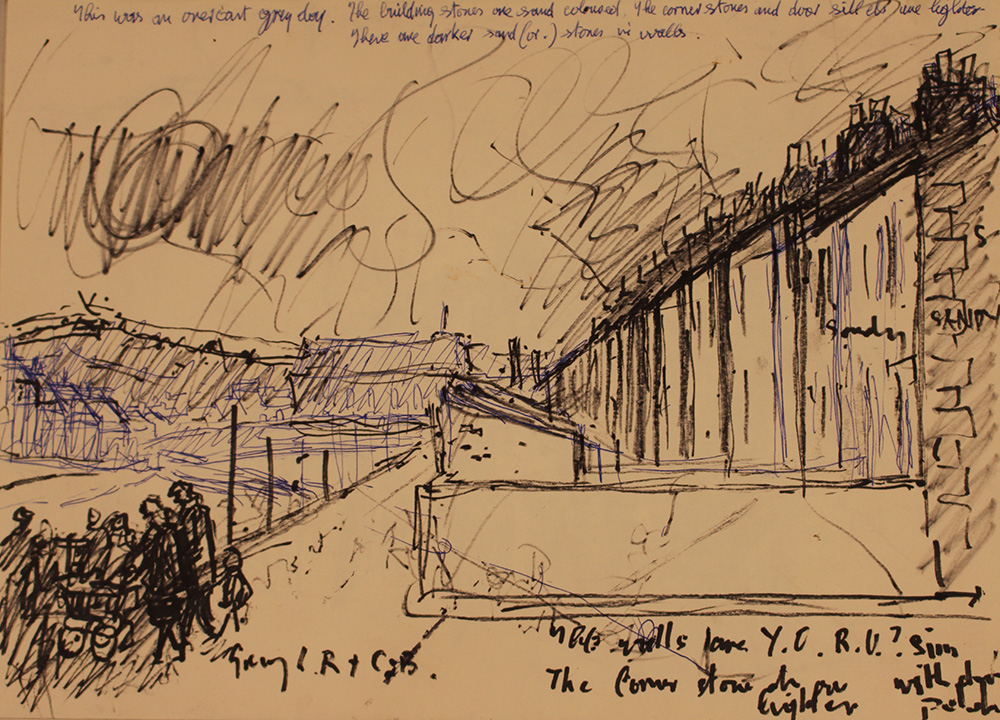
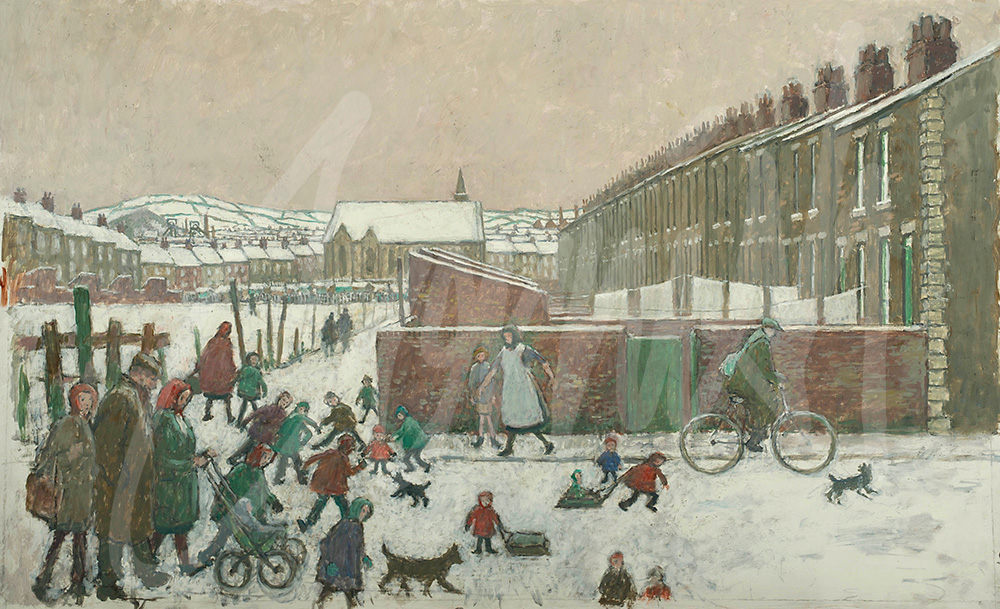
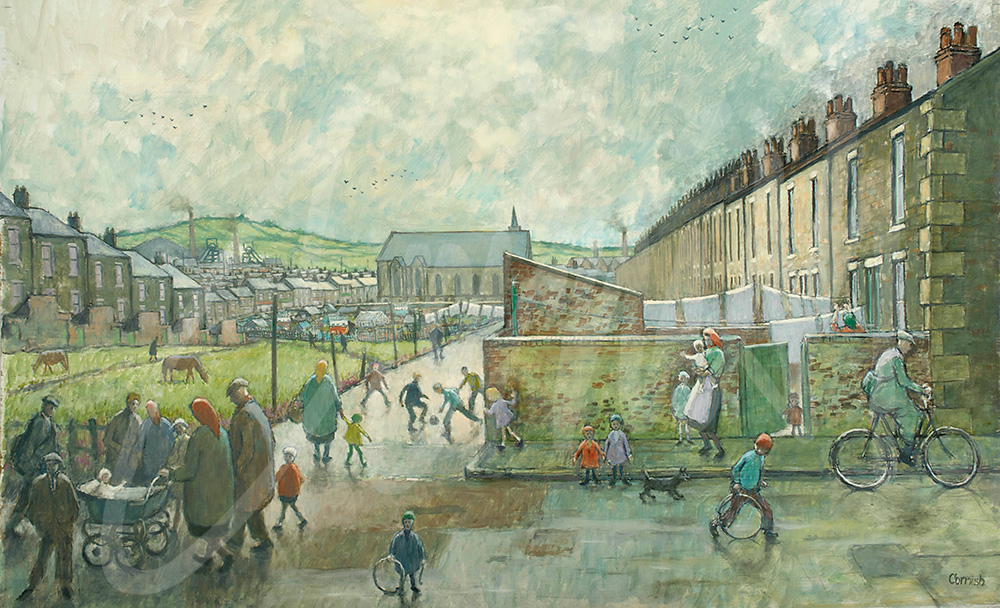
Observations of People
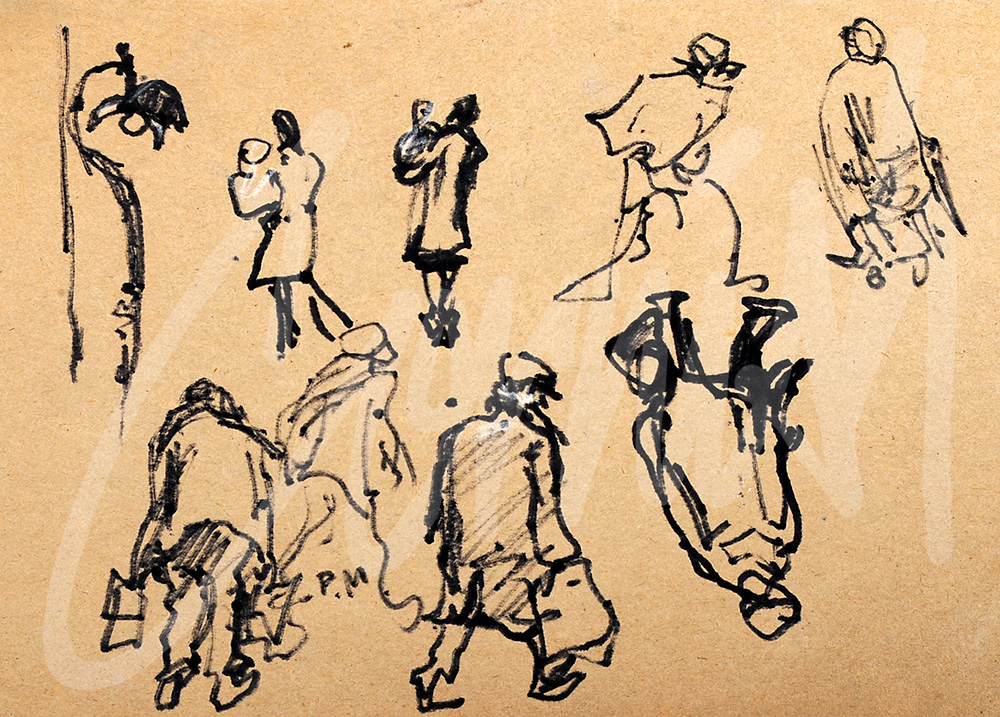
The ability of an artist to sketch and draw with speed and accuracy and to capture a moment in time is fundamental to future success and forms the basis upon which all else follows.
The early years of Cornish’s life and career were particularly significant in the development of his sketches and carefully observed drawings. His favourite medium was the Flo-master pen – an early version of the modern fibre-tipped pen. The pen could be re-filled and nibs inter-changed as required. The width of the strokes and intensity of the ink could be controlled by applying pressure, or a light touch. Accuracy was important as the indelible ink dried on the surface of the paper within two seconds. Tiny black dots are sometimes visible on some drawings, as he touched the paper with the pen to stimulate the flow of ink.
Cornish’s wife, Sarah, adapted his jacket with a ‘poacher’s pocket’ large enough to hold his sketchbook and pen, so that wherever he went the sketchbook and pen were always immediately accessible. This meant that whenever something of interest caught his attention he was quickly able to access materials to record a particular moment in time.
Cornish often said that painting and drawing was like an itch that had to be scratched. Rarely, can one town and its people have received so much attention from an individual artist, with over 5,000 drawings and water-colours in the sketchbooks which are in the archive at Northumbria University in Newcastle.
Cornish also drew on scraps of paper, newspaper, The Radio Times and many other surfaces. A recent revelation was a drawing on the back of a box of Cadbury’s chocolates. The cost of art materials became a constraint on his limited budget during this period of his development.
Cornish was aware of the contribution his work could make to both the history and sociology of mining communities and the sketchbooks are a valuable resource far beyond the world of art.
They provide a remarkable visual journal of his work, capturing and recording the people and places in and around Spennymoor, County Durham and across the region. Many of the drawings subsequently provided the material for his paintings.
The sketchbooks provided the inspiration for the publication of ‘Behind The Scenes: The Norman Cornish Sketchbooks’, which explores the relationship between the original drawings and related completed works.
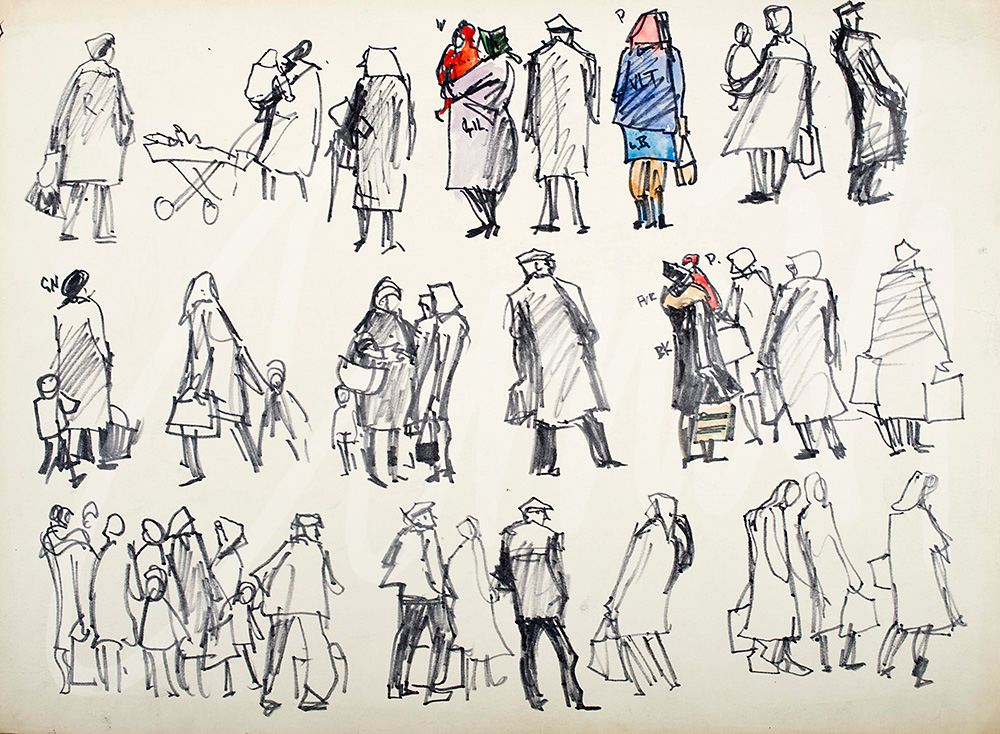
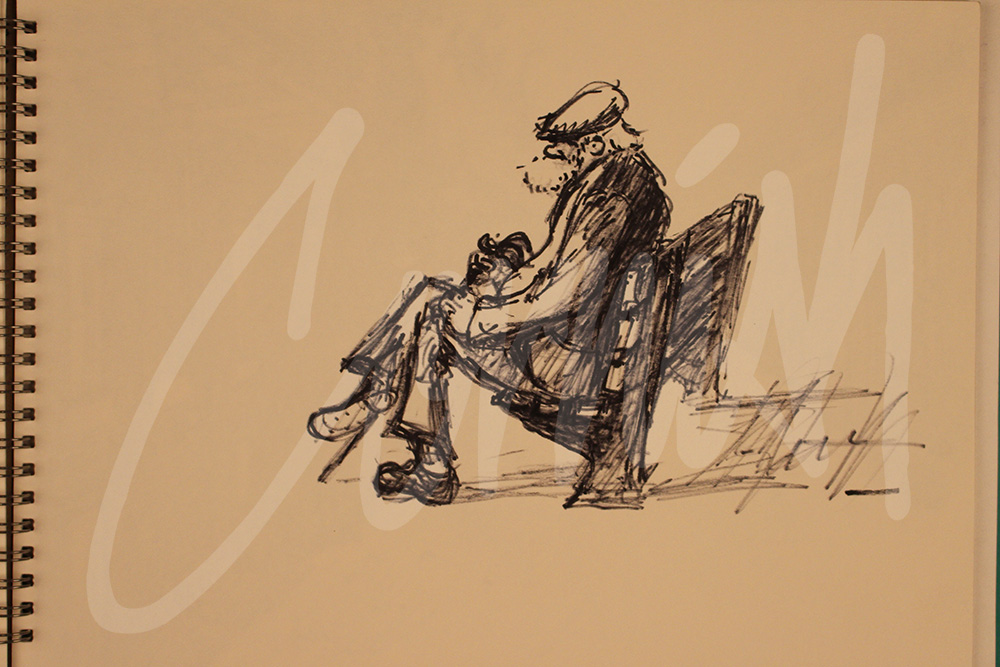
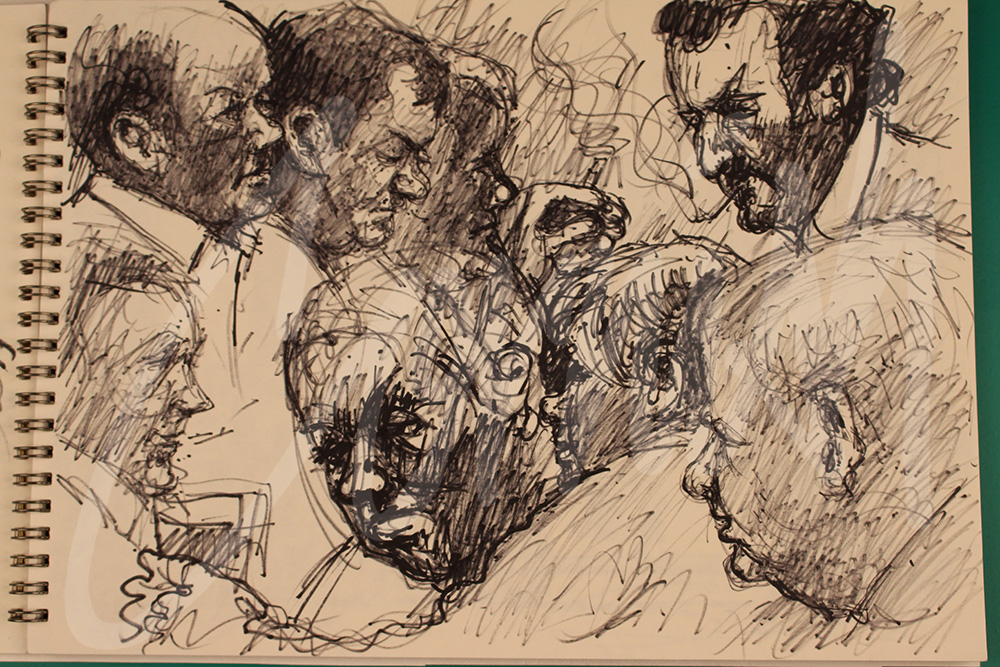
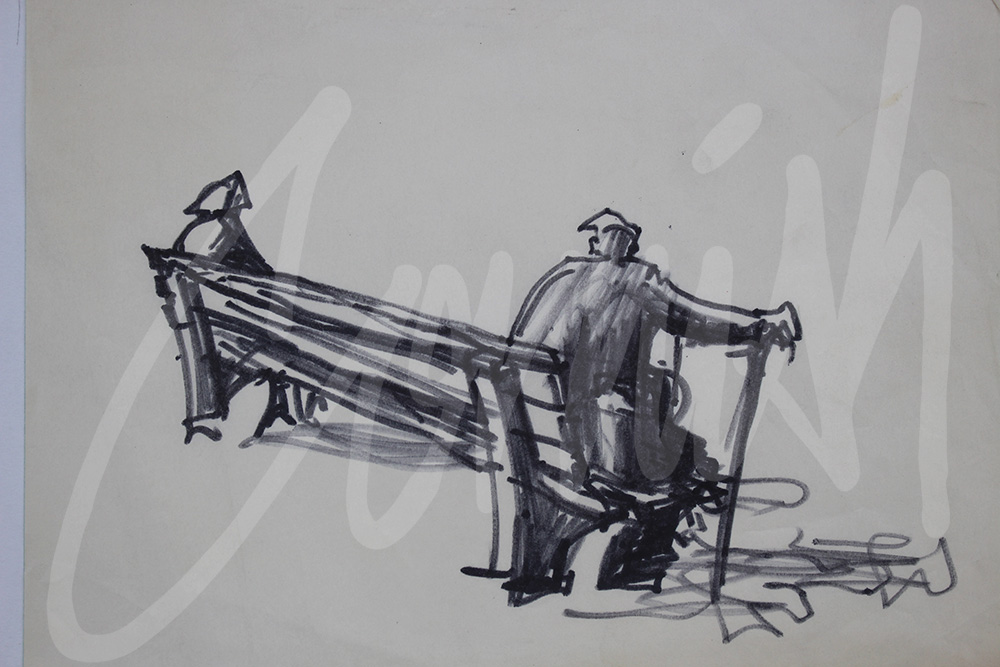
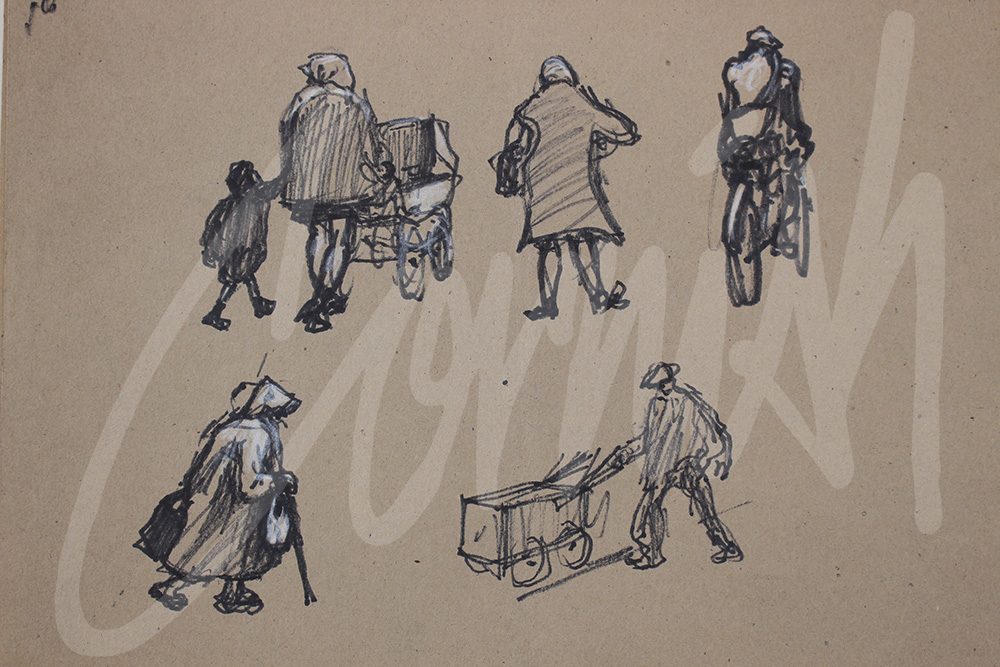
Beyond the Pit Road
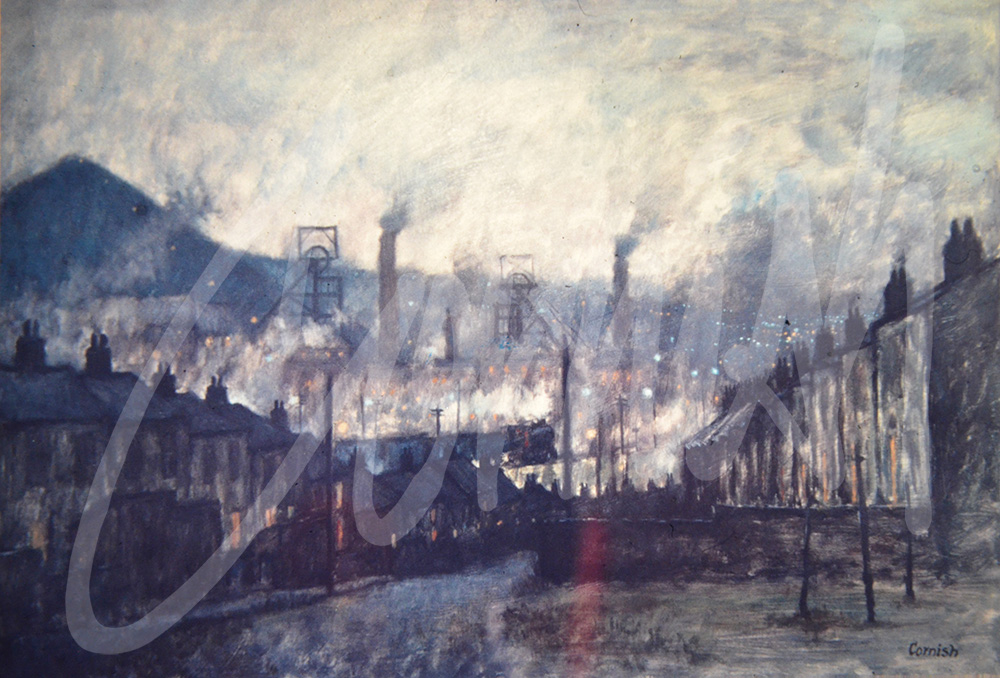
Cornish trudged the pit road to Dean and Chapter Colliery at Ferryhill for over thirty years in all weathers, all seasons and at all times of the night and day. The walk to work was almost three miles each way leading from the end of Bishop’s Close Street, under the railway bridge and passing a harsh industrial landscape on one side, contrasting with agricultural tranquillity on the other side….. but what lay beyond the pit road ?
Ferryhill is located on a high point on the Magnesian Limestone ridge which extends across the county from the east and which is visible at many locations. There is a natural gap in the ridge near Ferryhill Station which is where the main east coast rail line passes through. Durham Cathedral is visible from the ridge which continues to Kirk Merrington where the church is a landmark feature from many points in the county. The medieval Great North Road passes through a ‘cut’ in the ridge and is now classed as the A167. The remnants of the Dean and Chapter ‘pit heap’ have been landscaped but the outline shape remains visible. Ferryhill was also surrounded by other collieries such as Metal Bridge (drift mine), West Cornforth, Mainsforth, Chilton, Leasingthorne and Westerton.
In 1962 Cornish transferred to Mainsforth Colliery as some collieries became exhausted of coal reserves and the pit bus would collect the men at various points to take them to work. Mainsforth Colliery was the pit where Cornish was working when he received the call from Durham County Council to request that he ‘paint a mural’ to commemorate the opening of the new County Hall.
Cornish’s new journey to work meant that the bus would take him up Durham Road in Ferryhill into the village (as it was known) and then descend to Ferryhill Station and Mainsforth Colliery. Ferryhill was also the location of the largest Working Men’s Club in the region and a ‘wit’ once observed that hundreds would be homeless if it ever closed. The Friday market was a popular feature of life in ‘the village’ and some Ferryhill residents went on to achieve fame with some interesting careers such as: Jack Scott BBC weatherman for many years, Alan White, drummer with the Plastic Ono Band, George Harrison, and Yes. Sid Chaplin OBE lived in Gladstone Street in Deanbank during the 40s and 50s. He also worked at Dean and Chapter Colliery and he was a personal friend and contemporary of Cornish at The Spennymoor Settlement.
The Ferryhill connection continued and several years ago BBC Radio 4 broadcast a series of plays by Michael Chaplin called ‘The Ferryhill Philosophers,’ where an ex miner discusses some of life’s big questions with a philosopher from up the road at Durham University. Part of the answer to the big question, ‘what lies beyond the pit road ?’ can also be seen in Cornish’s paintings from a high view point at the top of Durham Road looking back at Dean and Chapter Colliery and ‘market day’ in the village.

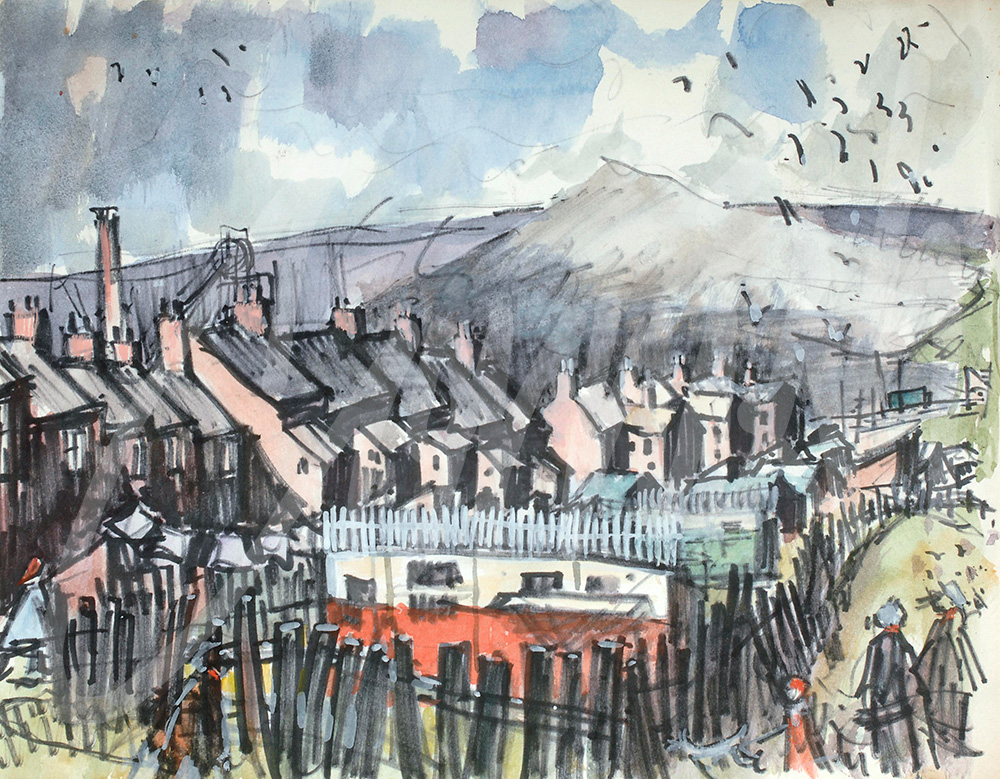
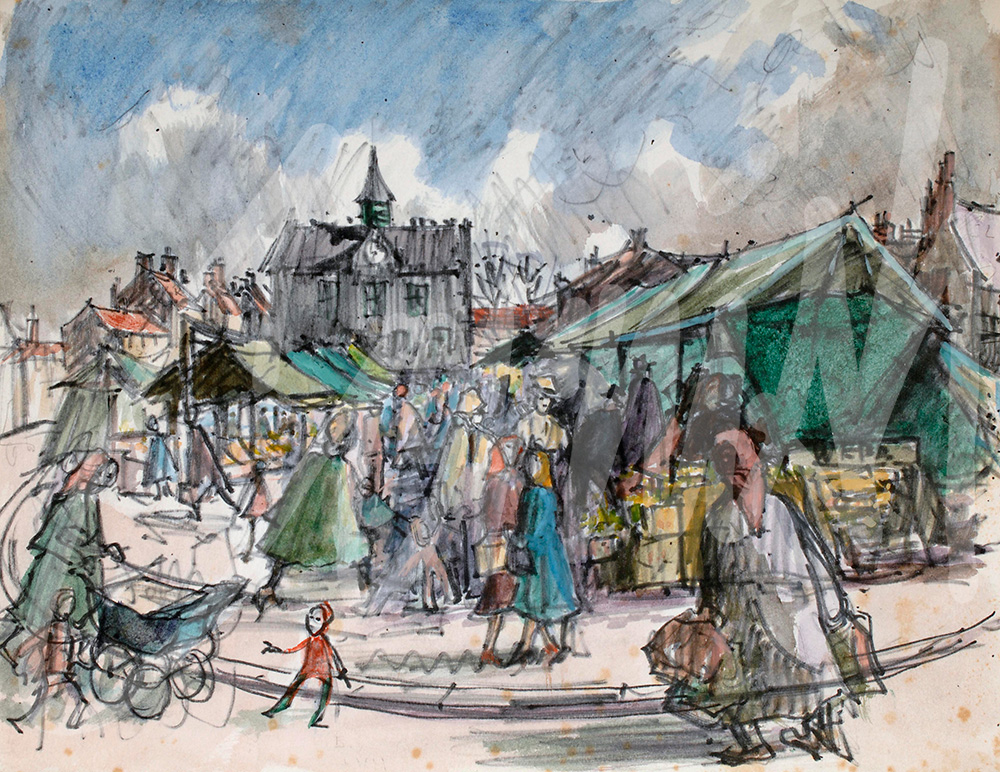
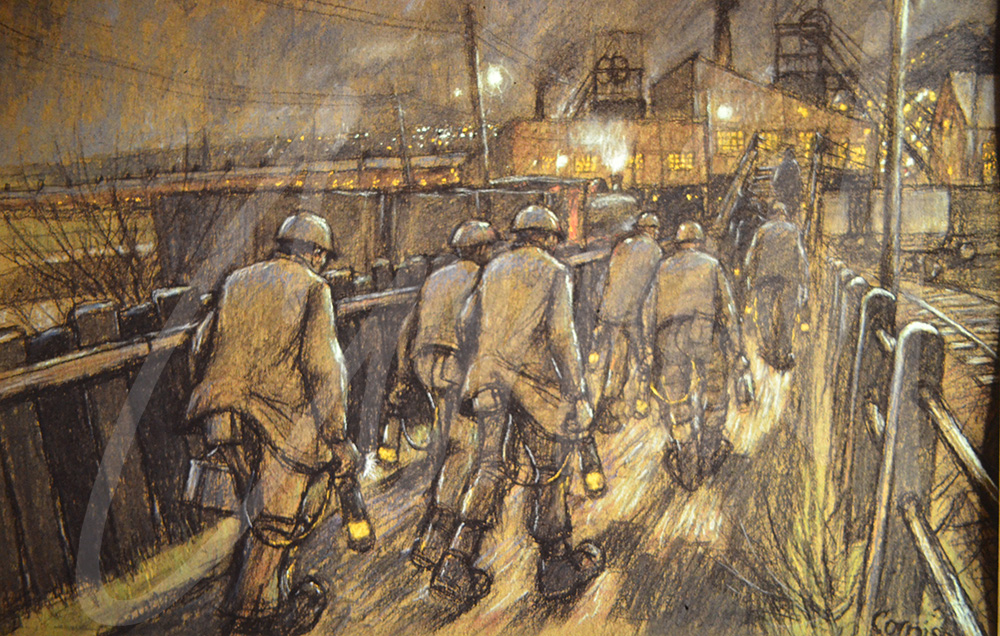

Darning Socks and Courting
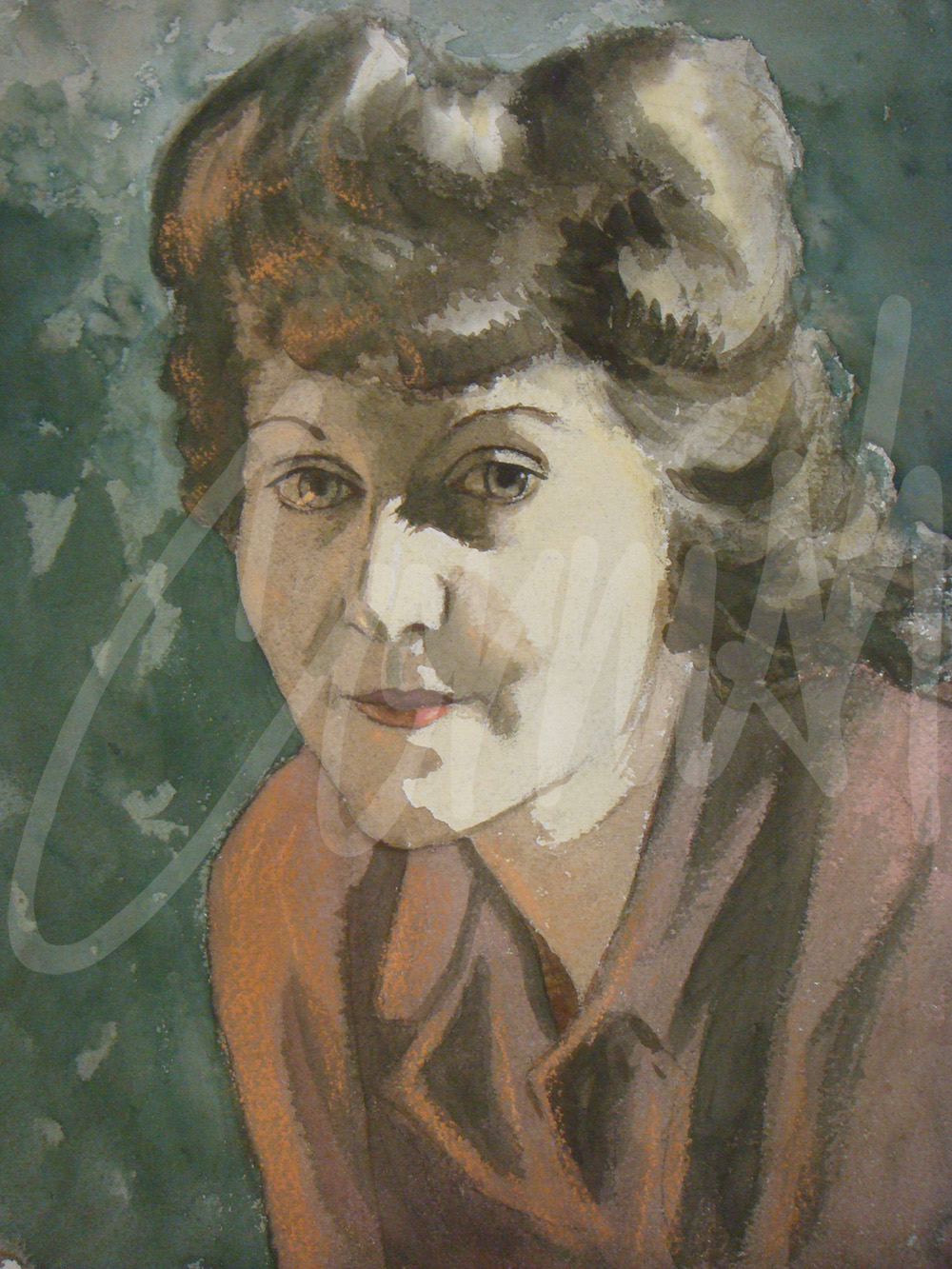
There were two attempts made to help Cornish go to art school. The first in 1939 was an application to the Slade in London. The second in 1942, was to Newcastle University where Robert Lyon, who had crucially supported the Ashington Group, was Head of Painting. Both applications for financial assistance were rejected by the Miners’ Welfare Fund which claimed that such help was ‘not part of their brief’.’
The setbacks may have been a blessing in disguise. Painting the life he knew with integrity was fundamental to Cornish’s motivation and ‘dabbling’ in alternative theories and modern art may well have damaged his approach, which was based upon the advice of Bill Farrell at the Spennymoor Settlement.
Denied this opportunity to attend a prestigious art school was, in hindsight, to become a blessing in disguise, as his young wife Sarah became his muse and the subject of many paintings and drawings. They met at a ballroom in Spennymoor in 1944 and following two years of ‘courting’ they married in 1946. Life drawing classes were a foundation of art college teaching but his observations of ‘real life’ happening at home, at work and in the community were to become the hallmark of his approach to painting and drawing. Cornish was surrounded on a daily basis by Sarah going about the typical tasks within a young family: preparing the vegetables, knitting, ‘bathing the bairns’ in the tin bath, scrubbing the front door step, a bedtime story, words of comfort. They all became subjects of interest following, ’hold it there.’ or ‘don’t move,’ as the position was held while the drawing was completed.
In his own words: “ Many times I drew and painted pictures of my wife Sarah, when she was busy with household chores, especially when she was knitting. I felt that her prayer-like attitudes gave the pose a sense of sanctity, and knitting was her way of praying, really doing her best to keep our home and children together.”
Little did Sarah know that her daily tasks , including ‘darning socks’ would eventually become the subject of her husband’s work as an artist and that she would grow into a pivotal role in his journey to become a professional artist. Sarah encouraged Cornish to leave mining in 1966. He was offered a part-time role at Sunderland Art College where one of his responsibilities was to teach ‘life drawing,’ although there was some resentment from some staff and some students because he didn’t have an academic background !
Please explain ‘courting’ and ‘darning socks’ to the younger members of your family.
